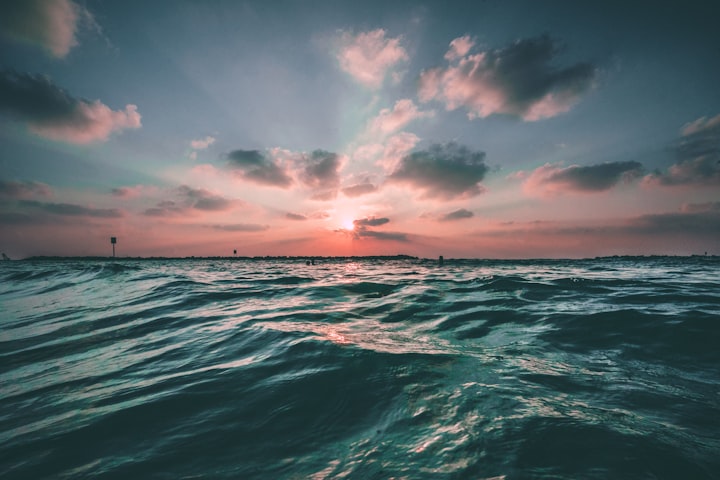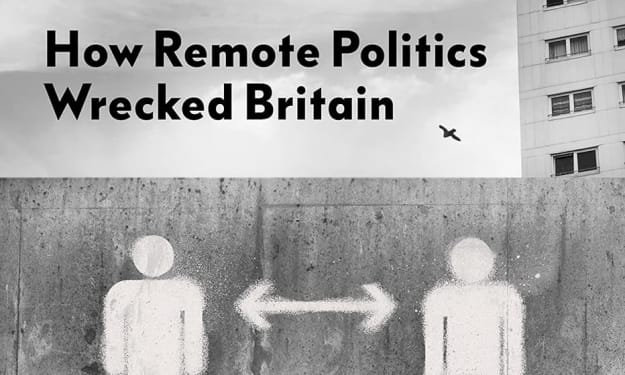When you think about fantasy or science fiction, what are some of the first things that come to mind? Say, for example, I bring up The Lord of the Rings, either the novels by J. R. R. Tolkien, or the excellent trilogy of films directed by Peter Jackson. What images does that title invoke in your head? Does it bring to mind the rich, earthy hobbit holes of the Shire, full of gardens, second breakfasts, and tiny barefoot halflings? Or do you think of the dark and abandoned dwarven halls of Moria? The strangely ethereal forests of Lothlorien, where the immortal and nearly celestial elves wander? Similarly, if I mention Star Wars, this, even for those with just a passing awareness, will conjure images of glowing lightsabers, the twin suns of Tattooine, bizarre aliens, and iconic smuggler ships capable of making the kessel run in less than twelve parsecs.
These franchises are beloved by many people, for many reasons. There’s a reason why they’ve all made their way into pop culture after all. Their characters are lovable, their storylines are classic. But in so many ways, these series would be hardly as remembered, without the evocative nature of their settings. After all, what would Middle Earth be without the One Ring and Mount Doom? Would we enjoy Star Wars as much without the Death Star, or the dark side of the Force?
Setting and worldbuilding is, in a word, critical. Whether you’re a writer working on the next fantasy bestseller, a dungeon master designing a homebrew Dungeons & Dragons campaign, a comic artist trying to make it big, or a storyteller of any variety, a compelling setting is one of the most vital elements in these tales of adventure. It’s one of the things that makes your stories memorable, and that makes the emotional experiences last long after the epilogue, or the final issue. In this article, as a writer/dungeon master of about ten years, I’ve compiled five tips and tricks that I’ve learned over the course of telling a variety of stories. Hopefully some of them will prove helpful!
1. Start Small
Constructing a world is a very intimidating task when you first begin to do so, regardless of the project you’re undertaking. Because of this, it can sometimes be very difficult to figure out where exactly to begin. Especially in cases of science fiction or high fantasy, trying to plan continents and countries, or planets and federations can be an incredibly daunting feat.
For this reason, I recommend that you start small. Where do you want your story to begin? On a ship? In a town? A city? A palace? Slowly investigate this place. Ask a few questions to feel out what makes this place tick. What things have inspired it? What makes them unique within this setting?
From there, look at the smaller place or setting you’ve just created, and contextualize it in the next larger “sphere” of influence. If you’ve begun in a palace, what is the immediate portion of the surrounding city like? If you’ve begun on a ship, what was its home port like prior to its departure? Then ask yourself how this smaller piece influences the larger, and vice versa. Slowly but surely you can begin to build up the foundations of a world that will serve your story.
2. Spot the Differences
You know those puzzle books where you see a pair of almost matching images, but that have certain elements out of place on one side? Your job, as the puzzle solver, is to spot all of the differences between the two. Worldbuilding, in many ways, can be something very, very similar.
Many people who are trying to create a world for a story of any variety take inspiration from a number of different sources. And that’s perfectly fine! In my own campaigns or stories, I heavily lean on different favorite works of fantasy fiction, real world events, and historical influences; I’m an inspiration magpie and love to look all over for things that I find particularly exciting.
However, when creating a memorable setting, it’s often the differences, the things that make the settings unique, that make them as exciting as they are. When picking inspiration from different sources, don’t be afraid to play in the space a little bit. If you read a novel with a bit of worldbuilding you really enjoy? Steal it! Explore it! Find out what elements of that worldbuilding drew you in, or fascinated you in the first place! Then when you have a decent grip on why? Put your own spin or twist on it. When people look at your work from there, they very well might be able to see some of those influences, but they’ll recognize your efforts. Who knows? They might like them more than the original!
(As a brief disclaimer, please don’t take this to mean that you should blatantly plagiarize someone else’s work, or if drawing inspiration from the real world, appropriate minority cultures. Give credit where credit is due, research heavily, use things as inspiration, try not to copycat.)
3. Mapmaker, Mapmaker, Make Me a Map
This one is not necessarily helpful in all circumstances, but for me, I find that having some variety of visual aid handy when I am in the process of constructing a world or a setting particularly useful. There are all different varieties of ways to generate maps, from online softwares such as Inkarnate, to hand-drawing, to whatever you really choose.
One of my favorite methods for this involves taking some variety of small item (as a chronic D&D player, I often dig into my bag of dice, though you can absolutely employ other items; I find macaroni pasta, or rice/dried beans very useful!) and scattering them at random over a large piece of paper or a whiteboard. I trace the outline of the clustered objects, occasionally tracing around smaller, separate clusters if I feel like having islands. From there, I remove the items from the paper and think about what kinds of elements I need or want to have. For instance, if I have a plot involving a mountain trek, obviously, I need to have a mountain or two or seven. If there’s going to be an adventure on the high seas, then I need to consider what kinds of port cities there are, how big they are, where they sail to.
This often also creates additional inspiration when naming towns, cities, or settlements. For instance, if I throw a jumble of letters down for one of these fantasy maps, such as “Grukaszh” (for this example, I key-smashed, added vowels, and reassembled until I found a combination I liked) the sounds of the name might bring to mind a settlement of giants, titans, dwarves, men, goblins, whatever your mind elects to think about. If it has a compound name, such as “Longbridge,” why is it called that? Is it for an obvious reason, or a less clear one? Suddenly, your place has history, stories about its nature, the kinds of people who live there, etcetera. All of these bits and pieces can be creative fuel for your brainstorming sessions, and can add a really unique spark of life to a world from very early on.
4. Collaborate and Listen
I can admit, as a creator, I often tend to hoard my creative ideas to myself. They’re precious and valuable to me in a way that very few things are, and having others participate in that creative process can be really intimidating at times. However, one of the most valuable tools available to creative minds is having other creative minds nearby to help, inspire, and encourage. Specifically over the last two years, I’ve found myself blessed enough to have a truly remarkable group of creative individuals, with whom I’ve been able to collaborate, both as a storyteller and worldbuilder. I can say without hesitation that I have grown significantly in my own skillsets due to their influence.
When it comes to worldbuilding in particular, it is one of the most incredible feelings to have people on hand who are willing to ask questions about the setting you’re creating. They might ask some of the most off-the-wall questions you were not expecting. Sometimes, they might be able to offer insight into certain elements of your world based on the kind of expertise or experience they have in regards to certain topics. Critiques from a knowledgeable source are absolutely invaluable. And in some cases, they might have ideas themselves that, assuming it’s alright with them, you may be able to integrate into your stories.
Other fantastic ways of collaborating in a worldbuilding context can involve working with fellow creators to devise a timeline of events, or create a history of a world. I highly recommend storytelling games such as Microscope to aid in this process, as it gives each player a degree of agency in constructing historical events on both a macro and micro level for any given fictional setting. As the old saying goes, two heads are better than one, and I definitely think this applies within this framework.
5. Cow Tools
In 1982, Gary Larson, creator of the comic strip, The Far Side, published a one panel comic of a cow standing behind a table with a variety of unusually shaped items. One or two of them had recognizable functions, such as a saw, while the rest of them were absolutely bizarre, appearing to have no function that we would know as useful in our own lives. This comic got a lot of notoriety for being generally bizarre, and people wondering what exactly the purpose of these “cow tools” were, but the general consensus on an answer was “Whatever you want their purpose to be, that’s what they do.”
One of the best pieces of writing advice I ever came across used this comic to illustrate a really fascinating point about worldbuilding and storytelling. As authors, we oftentimes go into great amounts of detail in our settings and worldbuilding, leaving nothing to chance, and leaving no stone unturned. But one of the greatest things we can do, as storytellers, is to leave space for our audience to interpret elements as they see fit.
Sometimes you don’t need a giant technical explanation for how something works within your setting. If anything, it can sometimes pull people away from the story you’re trying to tell. Assuming that you aren’t causing massive plotholes by leaving something out, sometimes the most effective way to worldbuild is to trust your audience to fill in these small gaps themselves, by using their imagination to come to their own conclusions. I’d recommend that you use this one a little more sparingly, as it can come across as lazy if you rely on it too heavily, but allowing your readers or listeners to extrapolate on the information you’ve provided them is one of the most fun parts of the storytelling experience.
I hope you’ve found these tips useful. While worldbuilding and setting creation can be one of the most daunting elements of telling these varieties of stories, they don’t have to be. With time, creative resources, and a listening ear or two, it can go from being an unpleasant chore to a fountain of inspiration. And while creating a compelling setting takes time and effort? Ultimately, it can be one of the most rewarding, and exciting aspects of the speculative fiction writing process. The next big hit is waiting just around the corner.
Now, go forth and create!
_________________
If you've made it to the end of this post, thanks so much for reading! If you liked it, or found it helpful in any way, please consider leaving me a like or a tip! I've got plenty more stories and advice to share in future if this is something you'd like to see more of. Thank you again for your time, and I wish you the best of luck in your creative endeavors!
About the Creator
Kit Olsen
Queer poet, short fiction author, and long-time storyteller of all varieties. Feel free to stick around and see if anything catches your fancy!







Comments
There are no comments for this story
Be the first to respond and start the conversation.